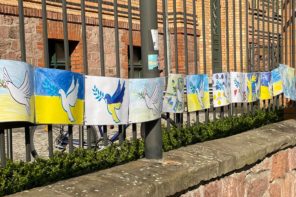Question 1: The rhetoric surrounding smugglers is packed with graphic images of violence and exploitation. What does your research indicate? Are smugglers really parasites profiting on human desperation, or, at the end of the day, do they provide a service to those on the move? How do we move the conversation forward?
Based on my reading of the literature, I think the question concerning the motives of migrant smugglers can be broken into five components (what I call the ‘5Cs’): ‘consent’ , ‘coercion’, ‘compassion’, ‘crisis’, and ‘cost’. Did the migrant consent to the type of service they are receiving? Was coercion involved? Was the smuggler acting out of compassion and humanitarianism, or indifference and mercilessness? Was the smuggler helping a family member or someone escape from an accident, a disaster, an emergency crisis, or a conflict, or is the movement more related to structural violence (such as poverty)? What are the financial or personal costs, and who benefits?
If the migrant consents, is not coerced or exploited, and the act is done for free in order to leave a situation of conflict or persecution, then we would have a case of ‘humanitarian assistance’. These should be seen as acts of compassion and not be penalised. Nevertheless, only eight EU member states have explicit clauses which exempt ‘humanitarian assistance’ from criminalisation, and all but three member states criminalise the facilitation of entry (with different rules regarding for-profit and not-for-profit assistance). If we are to move the debate forward in Europe, we need to be clear that humanitarian assistance should not be criminalised.
Question 2: Media, academic and policy circles suggest that human smuggling is a gateway into human trafficking. Many times both terms are used interchangeably. Does your work provide any insight into these phenomena and what does that say about migration?
While the popular conception in Europe tends to essentialise smugglers as a single group prone to violence and exploitation, the evidence I have documented in Turkey and Greece is much more mixed. During my fieldwork on migrant smuggling in Turkey and Greece in 2011-2012, I documented the various types of coercion and exploitation experienced by migrants who had survived the crossing to Greece using human smugglers. My work demonstrates that some cases of migrant smuggling involve coercion and exploitation. These findings mean that states have important obligations to protect those who have taken part in a smuggling operation, rather than pushing them back or preventing them from accessing protection procedures. Certainly migrant smuggling and human trafficking have been conflated in popular debate in Europe, but evidence demonstrates that some practices in the East Mediterranean are quite abusive and some are not. These blurred boundaries raise more issues than they resolve.
Question 3: Another myth connected to smuggling is the one pertaining to its organisation. We hear of smugglers organised into cartels, networks or transnational groups, but also of small-scale operations. What does your work suggest, and what does that say about irregular migration?
One of the first questions most researchers on migrant smuggling have is the question of its social organisation and the various structures and scales of relations involved. In my reading of the literature, coupled with my fieldwork, I cannot say there is one single global ‘archetypical’ structure for migrant smuggling organisations. The social structures of smuggling, while perhaps sharing some general characteristics with global political economy and the structure of the international state system, are rooted in local practices, customs, logics, politics, economics, geographies, and regional histories of migration (what I call ‘contingencies’ in my forthcoming book).
The pattern I observed in Turkey and Greece, with the majority working in small-scale, ad-hoc, resource-limited, ‘brokerage’-style arrangements, seems to be relatively stable. There are, however, exceptions to this regular structure. For example, large cargo ships with hundreds of migrants sent from southern Turkey ran aground in Italy at the end of 2014 and beginning of 2015, suggesting that more centralised, large-scale, well-resourced structures were involved. Many of us working on this topic are wondering if we are observing shifts in local structures due to ongoing geopolitical events and processes (such as the cartelisation of smuggling in Mexico, the ongoing violence in Libya and Syria, and increasing authoritarianism in Turkey).
We have yet to see how the ongoing Operation Sophia, a militarised EU anti-smuggling operation off the coast of Libya, or the recent deployment of NATO boats in the Aegean Sea are impacting local structures. Much of the information about these operations is not public (although recent WikiLeaks documents have been illuminating but one-sided), and fieldwork in Libya or Syria is difficult and dangerous. In Greece, the economic depression, coupled with ongoing prohibition and policing of migration, is having important effects on structures there, pushing people to move in riskier and more dangerous routes. One of the main questions is then how ongoing prohibition efforts are changing structures and leading to more or less harms towards those on the move.
See more responses here:
[circles_gallery ids=”18780,18660,18844,18770,18658,18657,18717,18662,18673,18669″]









